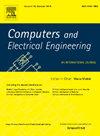Deep learning-based electricity theft detection for active distribution networks with high photovoltaic penetration
IF 4.9
3区 计算机科学
Q1 COMPUTER SCIENCE, HARDWARE & ARCHITECTURE
引用次数: 0
Abstract
The active distribution network (ADN) with high photovoltaic penetration faces increasingly serious electricity theft threats at present. However, existing electricity theft detection is still limited by the data imbalance, the malicious alteration on photovoltaic power generation data, and the confusion between significant irregular electricity consumption fluctuations of normal and fraudulent power consumers. Therefore, a novel data-driven electricity theft detector based on deep learning is proposed in this paper. Firstly, the proposed detector contains two balanced temporal generative adversarial networks (BTGANs), which synthesize abnormal samples involving diverse electricity theft behaviors to address the data imbalance. Secondly, the photovoltaic electricity theft detector (PETD) in the proposed detector perceives the malicious alteration on photovoltaic power generation data, and thus optimizes detection on electricity theft covered up by falsified photovoltaic power generation data. Thirdly, the temporal graph convolutional neural network (TGCNN) in the proposed detector captures unnatural changes in correlations between temporal electricity consumption features of interrelated power consumers as distinctive electricity theft indicators to eliminate the confusion. Finally, the performance of the proposed detector is evaluated by experimental research on actual power data collected from industrial estates in China. In the experimental research, the proposed detector achieves high accuracy of 97.64 %, a high detection rate of 98.44 %, and a false positive rate as low as 2.40 %, which indicates that it is more successful than existing electricity theft detectors.
基于深度学习的高光伏渗透有源配电网窃电检测
光伏普及率高的有源配电网目前面临着日益严重的窃电威胁。然而,现有的窃电检测仍然受到数据不平衡、光伏发电数据恶意篡改、正常用电用户与欺诈用电用户明显不规律用电波动的混淆等问题的限制。因此,本文提出了一种基于深度学习的数据驱动电力盗窃检测器。首先,该检测器包含两个平衡时间生成对抗网络(BTGANs),该网络合成了涉及多种窃电行为的异常样本,以解决数据不平衡问题。其次,该检测器中的光伏窃电检测器(PETD)感知光伏发电数据的恶意篡改,从而优化对被伪造的光伏发电数据掩盖的窃电检测。第三,该检测器中的时序图卷积神经网络(TGCNN)捕获了相互关联的电力消费者的时序电力消耗特征之间相关性的非自然变化,作为独特的电力盗窃指标,以消除混淆。最后,通过对中国工业园区实际电力数据的实验研究,对该检测器的性能进行了评价。在实验研究中,本文提出的探测器准确率高达97.64%,检出率高达98.44%,误报率低至2.40%,比现有的电盗窃探测器更成功。
本文章由计算机程序翻译,如有差异,请以英文原文为准。
求助全文
约1分钟内获得全文
求助全文
来源期刊

Computers & Electrical Engineering
工程技术-工程:电子与电气
CiteScore
9.20
自引率
7.00%
发文量
661
审稿时长
47 days
期刊介绍:
The impact of computers has nowhere been more revolutionary than in electrical engineering. The design, analysis, and operation of electrical and electronic systems are now dominated by computers, a transformation that has been motivated by the natural ease of interface between computers and electrical systems, and the promise of spectacular improvements in speed and efficiency.
Published since 1973, Computers & Electrical Engineering provides rapid publication of topical research into the integration of computer technology and computational techniques with electrical and electronic systems. The journal publishes papers featuring novel implementations of computers and computational techniques in areas like signal and image processing, high-performance computing, parallel processing, and communications. Special attention will be paid to papers describing innovative architectures, algorithms, and software tools.
 求助内容:
求助内容: 应助结果提醒方式:
应助结果提醒方式:


